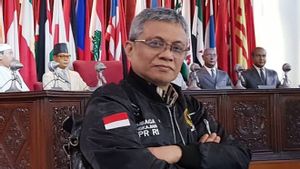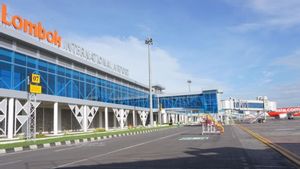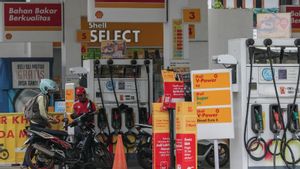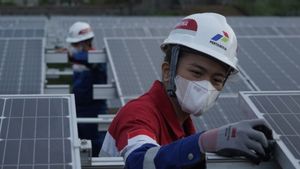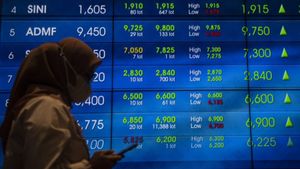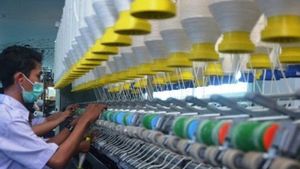PT Pertamina International Shipping (PIS) strengthens its position as a top tier LPG carrier in the Southeast Asia region after adding two giant gas tankers or a very large gas carrier (VLGC), namely Pertamina Gas Caspia and Pertamina Gas Dahlia.
PIS CEO Yoki Firnandi said in his statement in Jakarta, Thursday, May 9, that the two new VLGCs will be optimized to transport LPG and petrochemical commodities in the form of propylene and ammonia, as well as aimed at trading on international routes.
The two VLGCs with a length of about 300 meters or the equivalent of twice the football field and a capacity of 91,000 m3 were produced at one of the world's largest shipyards, Hanhwa Ocean, South Korea.
The launch of the VLGC of Pertamina Gas Caspia and Pertamina Gas Dahlia took place at the Hanhwa-Okpo Shipyard shipyard, South Korea.
Also present at the launch of the Secretary of the Ministry of SOEs Rabin Indrajad Hattari, Charge d'Affaires ad interim of the Indonesian Embassy in Seoul, South Korea, Zelda Wulan Kartika, Director of PIS Business Planning Eka Suhendra, and Director of PIS Fleet Muhammad Irfan Zainul Fikri.
Secretary of the Ministry of SOEs, Rabin Indrajad Hattari, warmly welcomes the presence of the two latest PIS VLGCs, which will further strengthen the role of PIS as the lifeblood of energy distribution in Indonesia, as well as make Indonesia's maritime industry proud in the global arena.
"VLGC is not just a ship, but an international collaboration test, technological sophistication, and an unshakable commitment to supporting Indonesia's energy resilience. This international collaboration, we believe, can encourage PIS capabilities, as part of PT Pertamina (Persero), in strengthening energy infrastructure," he said, as reported by Antara.
The two ships, he continued, were present at the right moment and played an important role in distributing LPG, more environmentally friendly energy for industry and households.
"The presence of this VLGC is also a form of dedication in strengthening Indonesia's maritime industry, along with the expansion of a more modern and recent fleet of ships. We create new opportunities for workers who are more skilled and of course raise Indonesia's position as at the forefront of the regional shipping industry," added Rabin.
Yoki added that the additional two VLGCs made PIS one of the most VLGC ship owners in Southeast Asia, with a total of seven units.
"The increasing number of VLGC fleets that are more environmentally friendly, also shows PIS's commitment to support sustainable energy and business transitions," he said.
VLGC Pertamina Gas Caspia and Pertamina Gas Dahlia are the largest gas giant tankers in the world that use the latest and environmentally friendly technology.
The name of the Caspia flower symbolizes success and memories, while the Dahlia flower signifies happiness and respect.
The new PIS-prone tanker will also operate on international routes, with its first voyage from Houston, United States, in May 2024.
Currently, there are 419 VLGC tankers sailing around the world, with an average age of 10.08 years. Meanwhile, a total of seven VLGC tankers belonging to PIS, an average age of 3.42 years.
"The average age of the PIS VLGC ship, which is classified as a special advantage, especially in terms of ship operational quality which is certainly more reliable, meets the latest regulations, the use of new technology that can reduce exhaust emissions is lower, and is more competitive," added Yoki.
The existing PIS VLGCs were previously named Pertamina Gas 1, Pertamina Gas 2, Pertamina Gas Amaryllis, Pertamina Gas Tulip, and Pertamina Gas Bergenia.
SEE ALSO:
Pertamina Gas Caspia and Pertamina Gas Dahlia have several advantages such as, the highest load flexibility in their class up to 39 combinations of payloads, and anti-piracy accommodation facilities (full anti-piracy accommodation) for the safety and comfort of crews.
In fact, Pertamina Gas VLGC Dahlia was immediately managed by PIS and manned by 100 percent of Indonesian crew.
In line with Pertamina's sustainability commitment, the two ships are also equipped with energy saving devices and shares generators, which increase fuel efficiency and reduce carbon emissions, and use dual fuel and selective catalytic reduction (SCR) environmentally friendly technology to reduce acid rain pollution (NOx).
The total fleet of ships belonging to PIS is now 102 units, including a very large crude carrier (VLC), VLGC, Suezmax, and other sized vessels. A total of 60 ships operate on international routes.
The English, Chinese, Japanese, Arabic, and French versions are automatically generated by the AI. So there may still be inaccuracies in translating, please always see Indonesian as our main language. (system supported by DigitalSiber.id)




